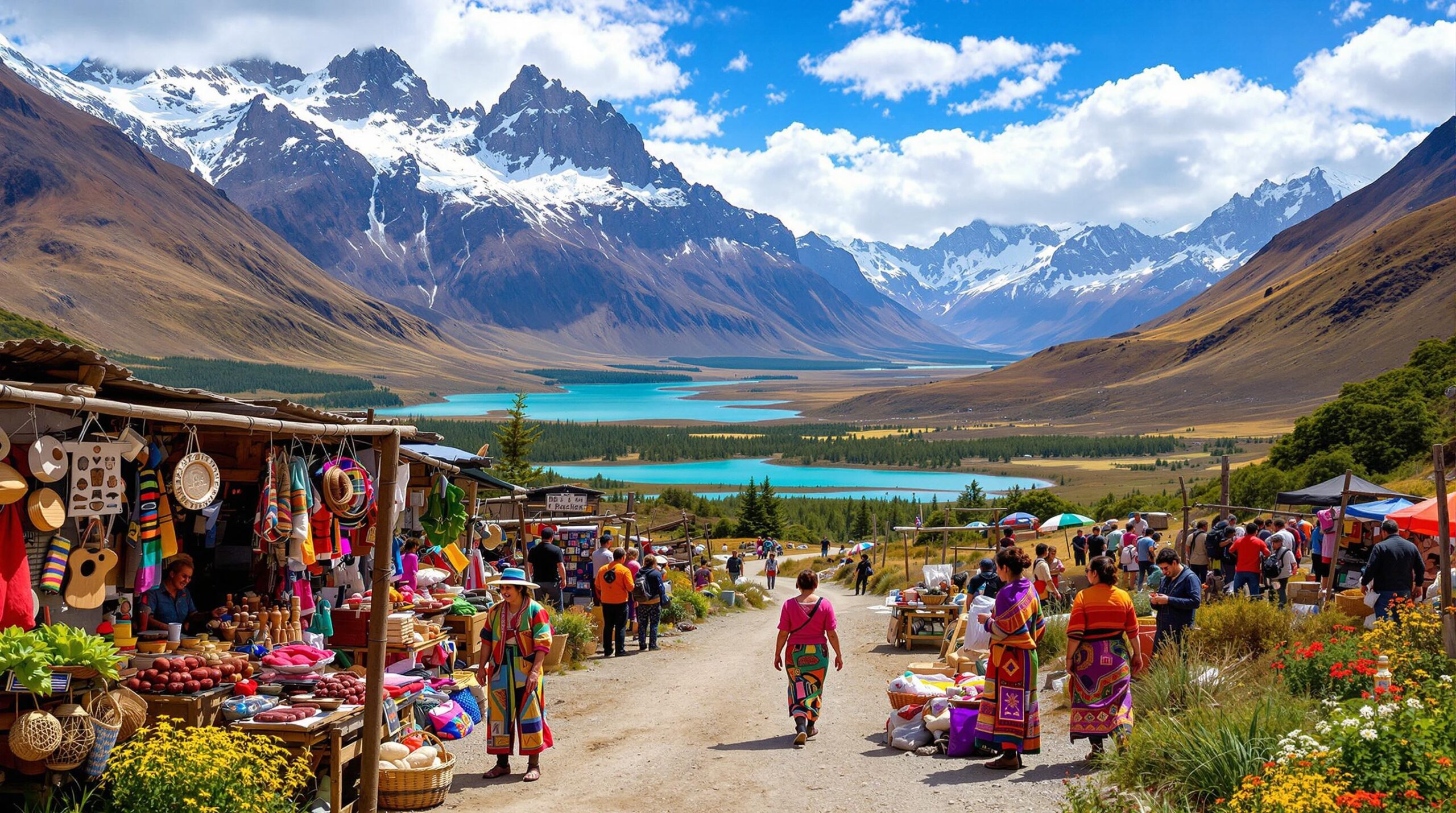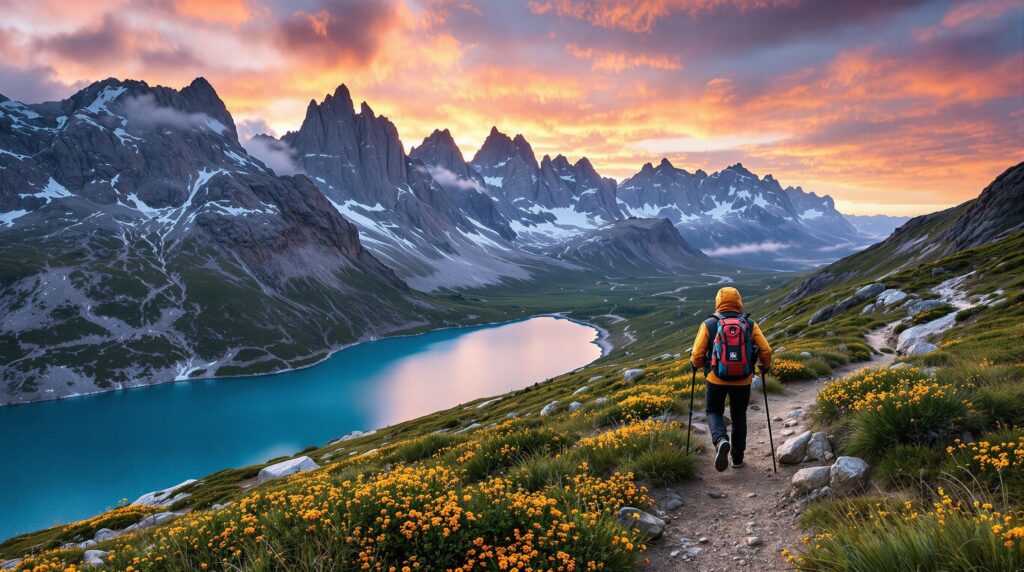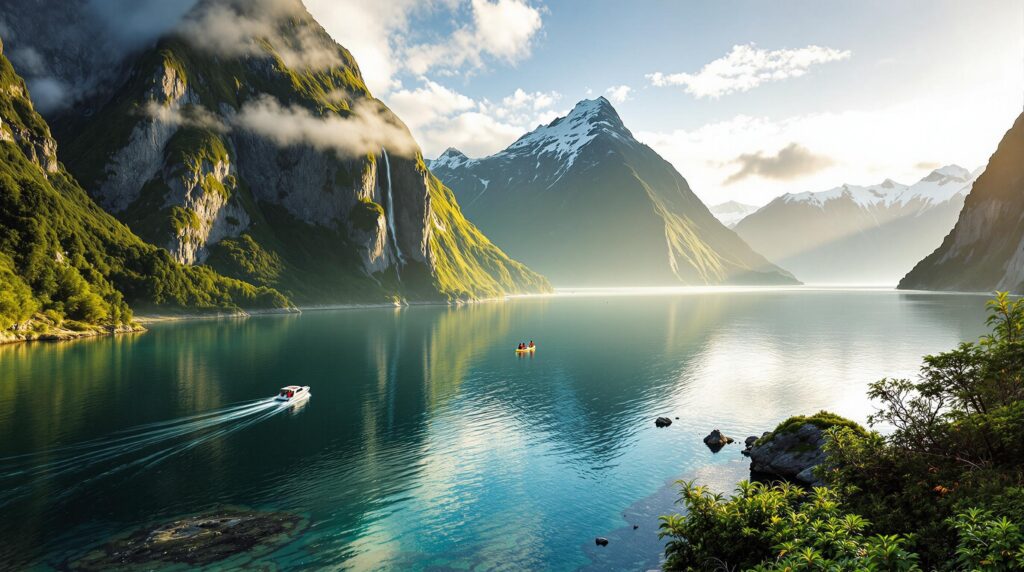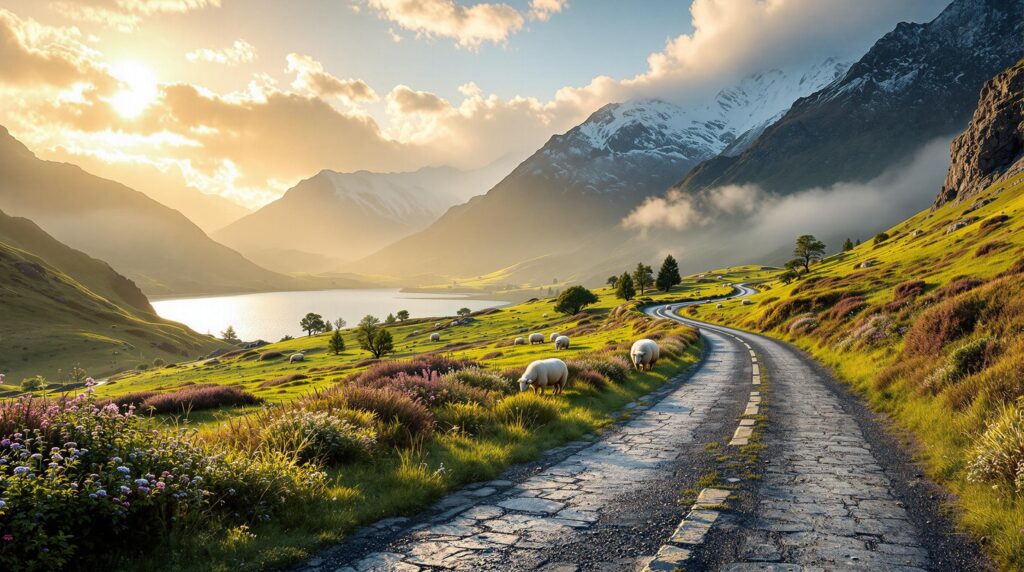Embarking on a trek in Patagonia is like stepping into a canvas painted by nature’s boldest strokes. My passion as a traveler from New Zealand has taught me that every journey is more than just a physical challenge; it is a rich tapestry of culture, safety, adventure, and personal discovery. Today I share my experiences and insights on Patagonia—a landscape as raw and dramatic as the highest peaks in New Zealand, deeply enriched by indigenous heritage and local traditions.
A deep connection with local communities, careful preparation, and a respect for nature are woven into every trail. I reveal practical tips on gear recommendations, safety advice, and regional navigation. This narrative offers not just guidance but an invitation to immerse oneself in the spirit of adventure backed with trusted resources such as Patagonia Travel Experiences and counsel from seasoned trekkers on platforms like Patagonia Hiking Guides.
exploring patagonia landscapes and culture
Patagonia welcomes adventurers with its majestic landscapes, where every vista tells a story. The vast panorama of rolling steppes, icy glaciers, and the rugged silhouette of the Andes invites trekkers to connect with the land. I have experienced firsthand how the stories and traditions of the indigenous Mapuche and Tehuelche peoples infuse everyday life here with charm and mystery. Their respect for nature is closely aligned with the values many of us Kiwis hold dear.
Walking along trails that resemble some of New Zealand’s most scenic hikes, I discovered that learning a few fundamental Spanish phrases opens up a world of genuine interactions. Greeting locals with a hearty “hola” and engaging in conversations about traditional foods such as empanadas has enriched my understanding of Patagonia’s cultural diversity. I remember standing in a bustling local market, the aroma of freshly baked bread mingling with the cool mountain air, feeling that each step was a blend of modern curiosity and ancient tradition.

immersive local culture and traditions of patagonia
The local culture of Patagonia shines through in its traditions, stories, and community values. I was mesmerized by community events and festivals that celebrate the land’s heritage. Through dances, folklore, and art, the indigenous communities share how deeply their lives are interwoven with the natural world. Conversations with local artisans emphasized that the land is not just a place to traverse, but a living, breathing entity that nurtures and challenges every visitor.
One of my most cherished memories was of a small encounter in a remote village where an elder explained the significance of the guanaco in local lore. This encounter was more than a meeting—it was a heartfelt lesson on respecting nature. It reminded me of the Maori wisdom back home, where every element of the environment has a story and spirit. In such moments, the essence of trekking transforms into a soulful dialogue between the traveler and the land.
While exploring the region, I compiled a list of cultural experiences that I highly recommend:
- 🌟 Visit local markets to taste fresh, authentic cuisine.
- 🌟 Attend cultural events and community festivals.
- 🌟 Learn basic Spanish phrases to connect deeper with locals.
- 🌟 Explore indigenous crafts and traditional music.
- 🌟 Respect local customs by asking permission for photographs.
Understanding traditional practices can also help prepare for the physical and spiritual aspects of a trek in Patagonia. One table below summarizes a comparative look at cultural values between Patagonia and New Zealand:
| Aspect | Patagonia 🌄 | New Zealand 🥝 |
|---|---|---|
| Respect for nature | Deep indigenous connection | Maori cultural gesture |
| Community interactions | Warm, storytelling approach | Friendly and welcoming |
| Cuisine | Empanadas, local charcuterie | Kumara, seafood delights |
On my journeys, I ensured I was well prepared with reliable gear. Trusted brands such as The North Face, Arc’teryx, and REI played a key role in making sure my equipment was up to the demands of varied terrains. My backpack was packed with essentials, including items from Columbia and Mammut, which proved indispensable in Patagonia’s unpredictable climate.
Exploring Patagonia becomes a personal exploration when one considers the parallels in natural reverence between here and home. Even casual interactions often touch on conservation efforts and respect for the environment. For more inspiring tales and advice on immersing in Patagonia’s charm, I often revisit trusted sources like hidden wilderness guides and detailed trekking itineraries found on South American travel guides.
Each day on the trail deepened my connection with nature while challenging me to consider the vast cultural heritage that shapes Patagonia. This dialogue between personal experience and inherited wisdom remains one of the most enriching aspects of travel. Travelers must treasure every encounter and commit to preserving the pristine environment we all love.
ensuring safety and respecting trail etiquette in patagonia
Safeguarding your well-being and honoring the environment are inextricable aspects of trekking in Patagonia. The unyielding beauty of this land demands careful preparation and mindfulness. I recall the moment when I realized that safety was not just about proper gear but also about understanding the subtle messages of nature. In Patagonia, every raindrop, gust of wind, and unexpected animal encounter serves as a reminder of the wild’s unpredictable rhythm.
Before setting out on any trail, I always ensure I have a comprehensive safety plan. Whether trekking through the rocky foothills or venturing near icy glaciers, I rely on robust equipment from trusted brands like Mountain Hardwear, Black Diamond, and Salomon. A well-chosen waterproof jacket from Outdoor Research and sturdy boots by Fjällräven make an indispensable part of my kit.
Meticulous planning includes monitoring weather forecasts—an imperative step when navigating areas where conditions can shift in minutes. Detailed briefings from local trekking guides, such as those featured on local hiking advice platforms, ensure that you remain aware of any impending storms or hazards. Clues about lingering clouds or rapidly dropping temperatures are signals to adjust your route or retreat if necessary.
preparing for patagonia’s unpredictable weather and terrain
Part of the challenge when traversing Patagonia is contending with its fluctuating weather systems. I learned that layering is the secret to staying comfortable throughout the day. A base layer of moisture-wicking fabric paired with insulating mid-layers and topped with a windproof outer shell enables flexibility as the weather evolves. I once experienced a sudden downpour mid-hike; thanks to my layered ensemble—featuring gear from The North Face and Arc’teryx—I remained dry and safe.
When it comes to trail etiquette, respect and courtesy are paramount. Every hiker on these paths contributes to a collective commitment to minimize environmental impact. Observing the principle of Leave No Trace means packing out all trash and minimizing your footprint. I also make a point to yield to those headed uphill and maintain low noise levels so as not to disturb both wildlife and fellow trekkers. Familiarity with these practices connects me with the global community of outdoor enthusiasts who share the same love for trails.
Here is a checklist I always follow before stepping onto a trail:
- 🔸 Double-check all gear and weather forecasts.
- 🔸 Inform a friend or local ranger about your route.
- 🔸 Pack extra food, water, and emergency supplies.
- 🔸 Confirm that your hiking boots and jackets are in working condition.
- 🔸 Familiarize yourself with local trail etiquette guidelines.
Having encountered sudden weather changes and unexpected trail conditions, I have come to appreciate the importance of carrying a personal locator beacon (PLB) and a comprehensive first aid kit. Sharing safety tips with fellow trekkers on community platforms, like those found on climate crisis tourism articles and recommendations in complete Patagonia packages, reinforces that a little forethought goes a long way in ensuring your safe return.
I extend my appreciation for the guidance found on expert advice sites such as wilderness guides and trekkers’ ultimate guides. Combining local wisdom with advanced planning enriches the experience while minimizing risks.
Respect for nature also involves maintaining a responsible relationship with the fauna. Encountering guanacos, condors, or even pumas calls for a calm demeanor and an appropriate distance. This respect for wildlife is not only crucial for your safety but also contributes to the conservation of these magnificent creatures. My travels have taught me that proper behavior on the trail is an unspoken language of respect—a language understood universally by those who love the wild.
Through mindful preparation and constant awareness, your trekking experience in Patagonia becomes more rewarding. The more prepared you are, the more you can immerse yourself in the beauty of the terrain without distraction. Trekking is as much about mental readiness as physical equipment, and embracing both leads to an unforgettable adventure.
essential gear and connectivity for patagonian treks
The right gear can be a game changer when exploring rugged trails. Personally, I invest in quality equipment that not only endures harsh conditions but also provides the comfort and protection needed on long treks. I always ensure that I have items from my trusted list: The North Face, Arc’teryx, REI, Columbia, Mammut, Mountain Hardwear, Black Diamond, Salomon, Outdoor Research, and Fjällräven. Their reliability is echoed in every step I take.
Selecting the appropriate gear is both technical and personal. For instance, my backpack from REI distributes weight evenly across my back, making long days on uneven surfaces much less taxing. The waterproof capabilities of jackets by Arc’teryx have saved me more than once when sudden rains turned my path into muddy streams. Similarly, trekking poles, sturdy boots, and layered clothing ensure that I am ready for any change in weather.
Understanding how to balance comfort, durability, and weight is a personal journey shaped by trial and error. I found it invaluable to attend local gear expos and demo sessions. Occasionally, I even come across exclusive pieces from brands like Columbia and Mammut that perfectly blend innovation with tradition. Reliable gear not only boosts confidence but enhances every step of the trekking experience.
navigating local communities and transportation in patagonia
Beyond physical equipment, meaningful connections with local communities and efficient transportation are essential for easing the trekking experience. Exploring remote areas requires a well-planned itinerary and a flexible approach. I always arrange my transportation ahead of time because Patagonia is vast and some destinations remain off the beaten path. Renting a car has often given me the freedom to explore hidden trails and spontaneous stops, a choice supported by local recommendations found on sites like travel-around tips.
Connecting with locals can reveal the secret gems of Patagonia. Being welcomed into family-run lodges or community centers adds a genuine layer to the experience. I once stayed at a cozy mountain lodge where a friendly host shared stories of local legends. Conversations flowed easily, fueled by local cuisine and hearty laughs. Such interactions are reminiscent of experiences shared on community travel guides and even earlier journeys recounted on local hiking blogs.
Local traditions often extend to transportation tips as well. I compiled a dynamic list of transportation tips for exploring Patagonia:
- 🚗 Rent a reliable vehicle for flexibility during remote explorations.
- 🚍 Consider guided tours when driving conditions are challenging.
- 🚃 Utilize local bus services to experience authentic community travel.
- 🚦 Always confirm road conditions, especially on unpaved routes.
- 🚨 Keep extra fuel supplies for long stretches between refueling stops.
For a quick comparison of transportation options, see the table below which highlights different travel modes and their benefits:
| Mode of transport 🚀 | Pros 🌟 | Cons 🌟 |
|---|---|---|
| Rental Car | Flexibility, privacy, adventure | High cost, maintenance responsibility |
| Guided Tour | Expert advice, safety, ease | Less freedom, fixed schedule |
| Local Bus | Budget-friendly, cultural immersion | Limited routes, infrequent services |
Connectivity extends beyond physical travel. Social media platforms often serve as excellent resources for real-time updates and connecting with fellow trekkers. I frequently share my journey on platforms like Instagram and Twitter, where invaluable advice circulates. For a glimpse into real-time experiences, check out . Sharing travel stories across these channels not only helps plan safer trips but also creates a global network of adventurers.
Enhancing this connectivity are quality travel resources. I have often relied on insights from comparative adventure guides and local resources that detail everything from weather patterns to road conditions. These connections ensure that every trek is executed with both passion and prudence, allowing nature’s unpredictable wonders to shine.
Investing in quality equipment coupled with strong local networks creates the right balance for exploration. I can confidently say that every moment spent amidst the majestic landscapes of Patagonia is enhanced by the assurance that I have what I need to safely traverse and appreciate this breathtaking environment.
a detailed itinerary through patagonia’s wonders
The wealth of experiences in Patagonia calls for an organized approach to relish every opportunity along the way. Drawing inspiration from guided tours and personal travel logs, I created an itinerary that captures both natural marvels and cultural encounters. This careful planning brings clarity and order to an otherwise vast and somewhat unpredictable landscape. Every day was a reminder of how Patagonia unites the power of nature with the warmth of local traditions.
My itinerary spans charming towns, epic national parks, and peaceful retreats in remote regions. Consider a schedule that combines guided exploration with opportunities for independent adventure, similar to those detailed on curated Patagonia journeys and itineraries from local multi-day hikes. A sample itinerary includes stops in Puerto Natales, Torres del Paine National Park, and El Calafate, each teeming with its own unique allure.
The day-by-day plan provides structure while allowing flexibility to absorb serendipitous moments. The table below summarizes a sample itinerary that I personalized over my travels:
| Day 🗓️ | Activity ⭐ | Highlights 🌟 |
|---|---|---|
| Day 1 | Arrive in Puerto Natales | Local welcome, cultural briefings |
| Day 2 | Visit Torres del Paine | Mountain vistas, glacier views |
| Day 3 | Travel to El Calafate | Scenic bus rides, cultural stops |
| Day 4 | Explore Los Glaciares National Park | Glacier walks, boat tours |
| Day 5 | Sailing on Lago Argentino | Up-close glacier views, local wildlife |
This itinerary allowed me to continuously experience a fusion of invigorating hikes and moments of quiet reflection. I cannot overstate the joy of waking up each day with a new adventure on the horizon. When strolling through town markets or engaging with local guides, I often find myself reminded of the universal language of exploration—a language that transcends borders and connects us all.
To further energize the plan, here is a checklist of essentials to consider for your expedition:
- 🚀 Pack layered clothing suitable for dynamic weather.
- 🚀 Ensure all trekking equipment is in perfect condition.
- 🚀 Prepare for long journeys by keeping snacks and hydration at hand.
- 🚀 Review local travel advice from platforms like wilderness guides.
- 🚀 Book accommodations and transport well in advance.
The careful preparation of your itinerary is as crucial as the journey itself. Travelers benefit from integrating both structured plans and spontaneous adventures, a balance that mirrors the unpredictable yet majestic nature of Patagonia. Every encounter, from witnessing the ethereal beauty of glacial landscapes to sharing heartfelt conversations with locals, enriches the experience.
Additionally, I find that trying local cuisines over meals shared with regional families adds a delightful flavor to each day. This personal touch, reminiscent of experiences I enjoyed in New Zealand, makes the expedition not just a trek but a celebration of life’s simple pleasures. Whether viewing towering ice fields or savoring a warm dish in a mountain lodge, every moment is a treasure waiting to be discovered.
Traveling in Patagonia truly feels like launching into a story that blends cultural exchanges, scenic routes, and raw outdoor splendor. For travelers seeking inspiration beyond typical paths, I highly recommend checking resources like National Geographic’s insights and adventure packages on complete expedition itineraries. Such guidance can further refine your schedule and amplify your experience.
faq
Q: What cultural experiences should I seek out during my Patagonia trek?
A: Embrace local markets, community festivals, and interactions with indigenous communities. These experiences offer authentic insights into the heritage and traditions deeply rooted in the region.
Q: How can I best prepare for the unpredictable weather in Patagonia?
A: Layer your clothing using moisture-wicking base layers, insulating mid-layers, and waterproof outer shells. Gear from trusted brands such as The North Face, Arc’teryx, and Outdoor Research is highly recommended.
Q: What essential gear should I pack for long treks in Patagonia?
A: Essentials include robust hiking boots, a quality backpack, trekking poles, and emergency supplies. Items from REI, Columbia, and Mammut ensure both comfort and durability.
Q: How important is it to connect with local communities while trekking?
A: Very important. Local connections enrich your journey by providing insights into hidden gems, local transportation tips, and authentic cultural experiences. Engagement with locals adds a personal touch to the adventure.
Q: Can I follow a pre-designed itinerary in Patagonia?
A: Absolutely. Using sample itineraries like the one provided—enhanced with trusted resources and customized to your pace—helps balance adventure with safety and comfort.
Hi, I’m Mark, a 38-year-old travel writer who traded his backpack for a peaceful life in New Zealand. After exploring dozens of countries, I’ve found my home among native bush, coastal walks, and the welcoming spirit of Kiwis. I now write about hidden gems, soulful places to stay, and local tips to help travelers experience the real New Zealand – slow, beautiful, and full of meaning.



